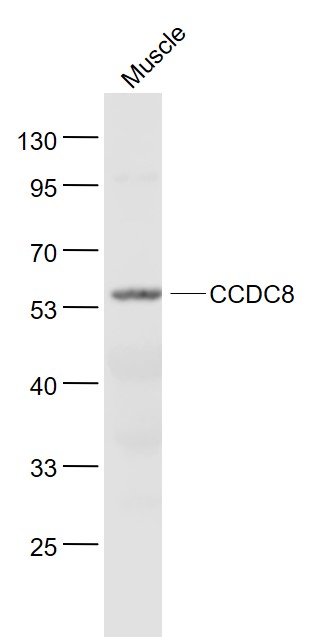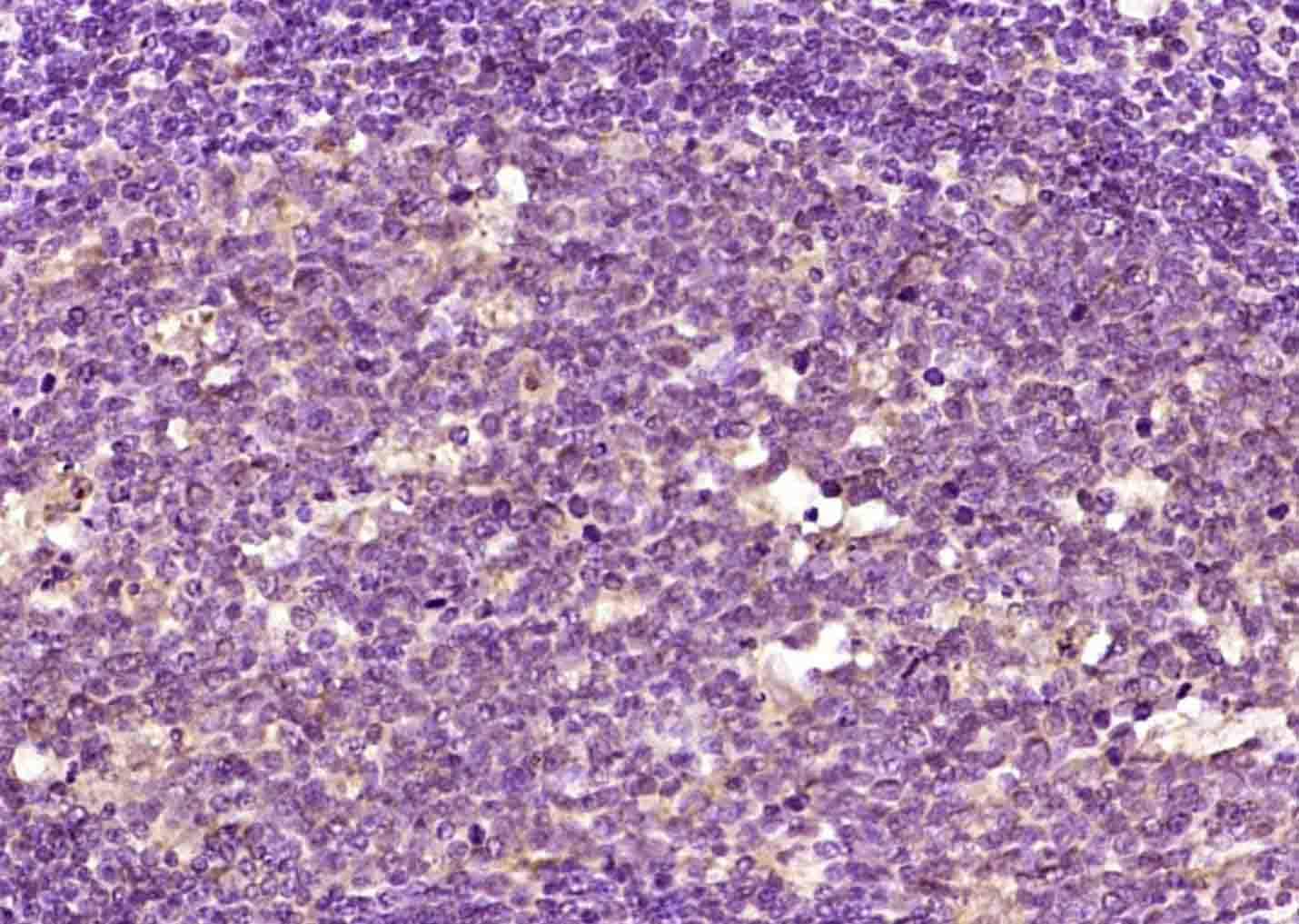CCDC8 Rabbit pAb
CCDC8 Rabbit pAb
- 产品详情
- 实验流程
- 背景知识
Application
| WB, IHC-P, IHC-F, IF |
|---|---|
| Primary Accession | Q9H0W5 |
| Reactivity | Human, Mouse |
| Predicted | Rat, Dog, Pig, Horse |
| Host | Rabbit |
| Clonality | Polyclonal |
| Calculated MW | 59374 Da |
| Physical State | Liquid |
| Immunogen | KLH conjugated synthetic peptide derived from human CCDC8 |
| Epitope Specificity | 165-270/538 |
| Isotype | IgG |
| Purity | affinity purified by Protein A |
| Buffer | 0.01M TBS (pH7.4) with 1% BSA, 0.02% Proclin300 and 50% Glycerol. |
| SUBUNIT | Interacts with OBSL1. |
| Post-translational modifications | Phosphorylated upon DNA damage, probably by ATM or ATR. |
| DISEASE | Defects in CCDC8 are the cause of 3M syndrome type 3 (3M3) [MIM:614205]. A disorder characterized by poor postnatal growth and distinctive facial features, including triangular facies, frontal bossing, fleshy tipped nose, and fleshy lips. Other features may include skeletal anomalies and prominent heels. |
| Important Note | This product as supplied is intended for research use only, not for use in human, therapeutic or diagnostic applications. |
| Background Descriptions | This gene encodes a coiled-coil domain-containing protein. The encoded protein functions as a cofactor required for p53-mediated apoptosis following DNA damage, and may also play a role in growth through interactions with the cytoskeletal adaptor protein obscurin-like 1. Mutations in this gene are a cause of 3M syndrome-3 (3M3). [provided by RefSeq, Dec 2011]. |
| Gene ID | 83987 |
|---|---|
| Other Names | Coiled-coil domain-containing protein 8, CCDC8 |
| Target/Specificity | Widely expressed with low levels in spleen, skeletal muscle, small intestine, kidney and liver. |
| Dilution | WB=1:500-2000,IHC-P=1:100-500,IHC-F=1:100-500,IF=1:100-500 |
| Storage | Store at -20 °C for one year. Avoid repeated freeze/thaw cycles. When reconstituted in sterile pH 7.4 0.01M PBS or diluent of antibody the antibody is stable for at least two weeks at 2-4 °C. |
| Name | CCDC8 |
|---|---|
| Function | Core component of the 3M complex, a complex required to regulate microtubule dynamics and genome integrity. It is unclear how the 3M complex regulates microtubules, it could act by controlling the level of a microtubule stabilizer (PubMed:24793695, PubMed:24793696). Required for localization of CUL7 to the centrosome (PubMed:24793695). |
| Cellular Location | Cytoplasm. Cytoplasm, cytoskeleton, microtubule organizing center, centrosome |
| Tissue Location | Widely expressed with low levels in spleen, skeletal muscle, small intestine, kidney and liver |
Research Areas
For Research Use Only. Not For Use In Diagnostic Procedures.
Application Protocols
Provided below are standard protocols that you may find useful for product applications.
BACKGROUND
This gene encodes a coiled-coil domain-containing protein. The encoded protein functions as a cofactor required for p53-mediated apoptosis following DNA damage, and may also play a role in growth through interactions with the cytoskeletal adaptor protein obscurin-like 1. Mutations in this gene are a cause of 3M syndrome-3 (3M3). [provided by RefSeq, Dec 2011].
终于等到您。ABCEPTA(百远生物)抗体产品。
点击下方“我要评价 ”按钮提交您的反馈信息,您的反馈和评价是我们最宝贵的财富之一,
我们将在1-3个工作日内处理您的反馈信息。
如有疑问,联系:0512-88856768 tech-china@abcepta.com.























 癌症的基本特征包括细胞增殖、血管生成、迁移、凋亡逃避机制和细胞永生等。找到癌症发生过程中这些通路的关键标记物和对应的抗体用于检测至关重要。
癌症的基本特征包括细胞增殖、血管生成、迁移、凋亡逃避机制和细胞永生等。找到癌症发生过程中这些通路的关键标记物和对应的抗体用于检测至关重要。 为您推荐一个泛素化位点预测神器——泛素化分析工具,可以为您的蛋白的泛素化位点作出预测和评分。
为您推荐一个泛素化位点预测神器——泛素化分析工具,可以为您的蛋白的泛素化位点作出预测和评分。 细胞自噬受体图形绘图工具为你的蛋白的细胞受体结合位点作出预测和评分,识别结合到自噬通路中的蛋白是非常重要的,便于让我们理解自噬在正常生理、病理过程中的作用,如发育、细胞分化、神经退化性疾病、压力条件下、感染和癌症。
细胞自噬受体图形绘图工具为你的蛋白的细胞受体结合位点作出预测和评分,识别结合到自噬通路中的蛋白是非常重要的,便于让我们理解自噬在正常生理、病理过程中的作用,如发育、细胞分化、神经退化性疾病、压力条件下、感染和癌症。







